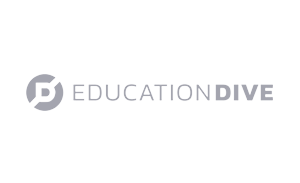This article was contributed by Dr. Watechia Lawless, principal of Napier Elementary School in Nashville, Tennessee. Dr. Lawless shares how social emotional learning supported the transformation of the once high risk elementary school. Dr. Lawless highlights how maintaining high expectations, prioritizing student and teacher wellbeing, and educating the whole child has created a safe and supportive environment at Napier.
Napier Elementary School: A Community of Resilience
Maintaining High Expectations
“I’m surprised it doesn’t stink in here.” “Your school looks like a prison.” “You will get the principalship because no one else wants to work there.” “Don’t worry about STEM, your kids can’t do STEM.” “You are not the right person for the job- you can’t get them off the priority list.” These were a few of the statements made to me prior to beginning my role as the principal at Napier School; a place that I saw as not only having tremendous needs, but also tremendous potential.
Napier Elementary School, located in the Metro Nashville area, is a school that carried a negative connotation in every way due its long standing low performance. Located in the poorest neighborhood in the city of Nashville, our students experienced extreme violence and neglect on a regular basis. At one point, we were actually the lowest performing school in the entire state of Tennessee.
Our school is named after Alonzo Napier, a member of the prominent Napier family. The family has a rich history in politics, finance and education, and spent the early 1900’s trying to make Nashville a better place for African Americans. Despite their efforts, the neighborhood that bears their name today is plagued with high poverty, high crime, abuse, neglect, and low expectations.


Napier Elementary School, located in the Metro Nashville area, is a school that carried a negative connotation in every way due its long standing low performance. Located in the poorest neighborhood in the city of Nashville, our students experienced extreme violence and neglect on a regular basis. At one point, we were actually the lowest performing school in the entire state of Tennessee.
Our school is named after Alonzo Napier, a member of the prominent Napier family. The family has a rich history in politics, finance and education, and spent the early 1900’s trying to make Nashville a better place for African Americans. Despite their efforts, the neighborhood that bears their name today is plagued with high poverty, high crime, abuse, neglect, and low expectations.

When I first walked into the doors of Napier I was overwhelmed by its complexity and the vast needs of the students and their families. They needed so much, and I wasn’t sure if I was the right person. I thought back to the way my own teachers and principal inspired me when I was a student, growing up poor in a single-mother home, with a crack addicted father who spent time in and out of jail. I thought about the last 21 years I spent advocating for my son, who was diagnosed with Autism at age 7. I quickly realized I was prepared for this challenge. My life’s journey led me here – led me to Napier – led me home. I wiped my tears and created a plan of action.
I didn’t see the kids as problems, I saw potential. I saw education as an equalizer, and was determined to show people that we could succeed. We were more than what people saw on the news about us; we are all beautifully made, deserving of an excellent educational experience. People treat you how they see you – I was on a mission for EVERYONE to see us as we truly are – AMAZING.
Establishing a Foundation
Three years later, Napier Elementary School made its exit from priority status, after achieving a TVAAS score of 5. We went from possible state takeover and a score of a Level 1, to coming completely off of the state’s list in 2017-2018. Some asked whether this was a mistake, many wanted to know how? I smiled and nodded back, because I knew all the obstacles we overcame after we established our vision in 2015, when we decided to do things our way- the Napier Way.
Our vision was to inspire leaders, learners and high achievers, with goals of having zero suspensions in a school year and the creation of a behavioral support plan to support our student’s needs.
We established core values that involved having a mutually respectful environment, providing rigorous instruction and supporting the social and emotional needs of our students and families. Once we established our identify and figured who we were, we were able to create who wanted to become.
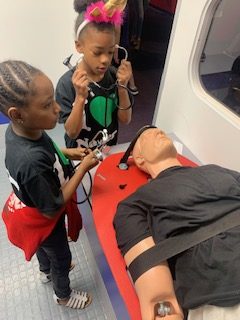
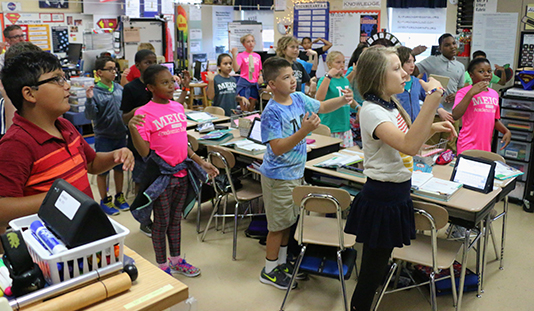
Our vision was to inspire leaders, learners and high achievers, with goals of having zero suspensions in a school year and the creation of a behavioral support plan to support our student’s needs.
We established core values that involved having a mutually respectful environment, providing rigorous instruction and supporting the social and emotional needs of our students and families. Once we established our identify and figured who we were, we were able to create who wanted to become.
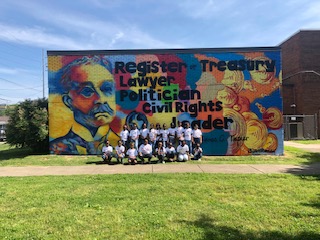
I knew that in order to reach these goals and our ultimate vision, we needed to address the needs of our school community beyond the academic realm. We started with the relationships with parents- the most critical partners in supporting our students. We provided food, clothing, rental assistance, utility assistance, connections to homeless shelters, counseling, and support in trauma.
We also ensured that our student’s parents were supported with a family resource center, which provided assistance with job readiness, resume writing, and access to computers. I saw that I had a privilege to serve, and I approached my student community with love and compassion, not judgements and assumptions.
Strengthening the Whole Child
With the established support for the basic needs of our students and their families met, we began to look at supporting the behavior of our students in their classrooms. I wanted to build a community with an emphasis on supporting, not punishing our students. Kids make mistakes, and it was important to me that we establish a safe space within the classroom where our students could re-set, and learn from their mistakes.
Our approach to behavioral support for students is very much a hybrid program, with components of restorative practices, PBIS and social emotional learning. Our social emotional learning program, Move This World, helps support all of it by teaching students appropriate social skills and conflict resolution, all in the classroom.
It was important early on that we chose a program that aligned with our priorities and goals, which is just what Move This World does. The program isn’t just an “add-on” to the teacher and student’s days, but rather something integrated into their routines.


Our approach to behavioral support for students is very much a hybrid program, with components of restorative practices, PBIS and social emotional learning. Our social emotional learning program, Move This World, helps support all of it by teaching students appropriate social skills and conflict resolution, all in the classroom.
It was important early on that we chose a program that aligned with our priorities and goals, which is just what Move This World does. The program isn’t just an “add-on” to the teacher and student’s days, but rather something integrated into their routines.

Soon after the program was implemented, we began to see our students adapt. The program gave students the language and tools needed to deal with their challenges, while managing their emotional experiences.
Our students aren’t being incentivized with little “trinkets” for positive behavior; they are becoming equipped with tools designed to help them succeed in the world, and become better citizens, outside the walls of our school.
A Community of Resilience
In addition to supporting our student community, I recognized another vital key to success was supporting Napier’s staff. In order for our teachers to help our students grow, they needed to feel their own needs were being supported and be able to engage in practices of self-care. Today, we do this in a few different ways. From support groups and access to counselors, to after-school exercise classes, and snacks, I have made sure teachers have access to benefits that support their health and wellbeing. We place a strong emphasis on “family-first,” to highlight the importance of taking care of ourselves, before supporting the needs of others.
Today, Napier Elementary School is a place with a culture of intentionality and resilience. Our focus on supporting the behavior of our students through social emotional learning has enabled us to accomplish two years of growth in one year, reduce student suspensions, and drastically improve our academic achievement.
Our students have opportunities to connect with themselves and others through restorative circles each morning that allow each student to discuss how they are feeling. They can participate in gender-based mentoring programs, and have the opportunity to engage in various enrichment activities, all designed to demonstrate that being a genius is not confined to pen and paper. We have expanded the available resources and opportunities, because we want our students to continue to grow as leaders of our community.
Our efforts to support our staff has also strengthened our teaching community. Teacher attendance has increased from less than 80% to 95%, and our teacher retention has also risen to one of the highest of the schools of innovation in the district, with a rate of 60% in a four year period.
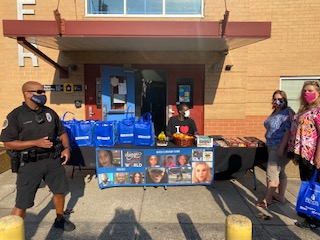

Our students have opportunities to connect with themselves and others through restorative circles each morning that allow each student to discuss how they are feeling. They can participate in gender-based mentoring programs, and have the opportunity to engage in various enrichment activities, all designed to demonstrate that being a genius is not confined to pen and paper. We have expanded the available resources and opportunities, because we want our students to continue to grow as leaders of our community.
Our efforts to support our staff has also strengthened our teaching community. Teacher attendance has increased from less than 80% to 95%, and our teacher retention has also risen to one of the highest of the schools of innovation in the district, with a rate of 60% in a four year period.

Napier will continue with this momentum. We intend on not only staying off the state’s priority list, but continuing to serve one family at a time, and support the social emotional needs of our students. Recently we proposed a change to the name of our school to capture the massive strides we have made, as well as the vision we will continue to carry with us- Napier Leadership Academy.
As we continue to grow and strengthen our community, I hope we can serve as a reminder to other schools of the power of recognizing opportunities for growth, supporting social emotional learning for students, and that underlying it all is the incredible fact that all students can learn.










